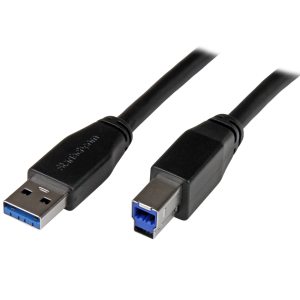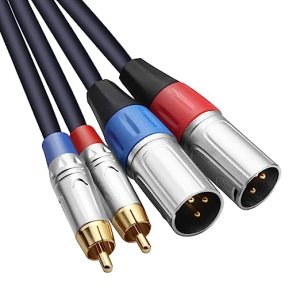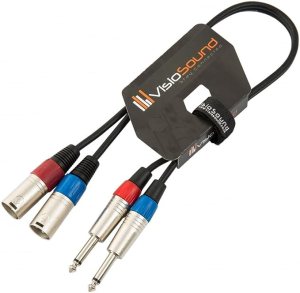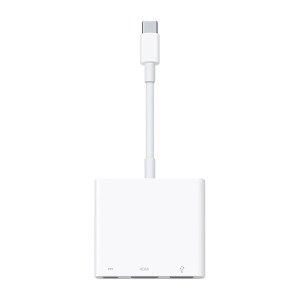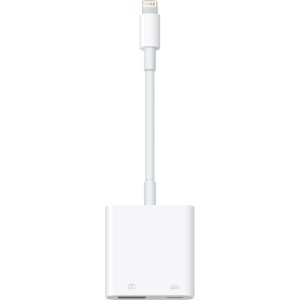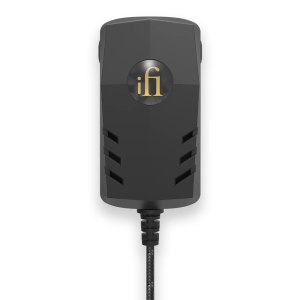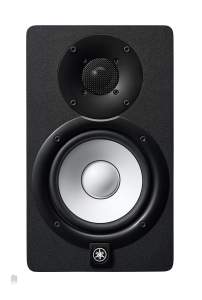What is the best sound system for psychedelic therapy?
HARRY SIMMONS •
The importance of setting to the experience and outcomes of psychedelic therapy has been widely asserted and continues to be an important area of research and development in the field. A key insight (implicit in the ritual ethos of many indigenous contexts) is that the immediate environment has a large part to play in the sense of safety, guidance and direction that is imparted to an individual or group undergoing an experience.
Based on more than 10 years of research we recognise that music is a profoundly influential, directive and experience-defining feature of the therapeutic setting, that poses a range of challenges (and opportunities) both in terms of music content and music equipment.
Music is intended to completely envelop the subjective experience of a listener undergoing psychedelic therapy. Additionally, perceptions of music are enhanced under psychedelics, where songs can become dynamically unfolding and entrancing worlds that narrate one’s inner experience and can give rise to a range of therapeutically significant processes and associations. In this sense, music is not passive, but plays an active therapeutic role.
Therefore, the choice and arrangement of music equipment for your therapy room/ listening space can have an appreciable influence on the overall setting, experience and outcomes of the session. A synergy of factors including speaker & headphone quality, comfort and positioning as well as room acoustics and noise pollution will determine the degree to which the depth and nuance of a composition is conveyed to a listener in a clear and undistracted manner, and therefore mediate the potential impact and effect of music as a co-therapist.
This article is intended to demystify the topic of music equipment and provide a definitive guide for any practitioner or therapeutic professional, currently working with, or planning to integrate music into their practice.
Please note: this article is written with practitioners, researchers and therapeutic professionals in mind who seek support for their clinical/ listening spaces in using electronically amplified, digital-format music. This means that some contexts and budget considerations that may apply to the general listener or live settings are omitted. Finally, this article is written without commercial interest and connection to the products and respective companies mentioned.
If you would like to share information about your own audio set-up to be featured in this or a follow-up article, please let us know in the form at the end.
Some rules of thumb
If you are time-constrained, refer to the following points of summary as you go about your own research:
- Consider the shape, size and noise pollution of your room before buying equipment. The more noise pollution, the more isolating you may want your headphones to be for example.
- Maximise comfort, a sense of immersion and sound quality with your set-up. This can be achieved with a focus on comfortable and well-built headphone designs, proper music volume attenuation, speaker positioning as well as minimising ambient noise within the space.
- Consider an external audio interface to supply music to both headphones and speakers simultaneously. We think both the iFi Zen Dac (US / UK) and Focusrite Solo (US / UK) are good options.
- A good pair of headphones can be a vital component for music immersion. We think Sennheiser HD 600 (US / UK) and Beyerdynamic DT 990 PRO 80 ohm (US / UK) are good options. If there is noise pollution present in your space, please consider other, more sound-isolating options below.
- A good pair of speakers can create experiential continuity for a listener when headphones are removed, and provides an option for no-headphone listening. We think the Genelec 8 Series (Comparison / US / UK) and Yamaha HS5 (US / UK) are good all-round speaker options. Please consider the configurations below for more information.
- It is best to avoid Bluetooth, as this can increase the likelihood for audio glitches and a reliance on battery-power can be inconvenient for permanent listening spaces.
Article index
The following structure will be used to respond to some common queries we have received over the last few years regarding audio set-up. This index can be used for navigation:
How do I choose the right sound system for psychedelic therapy?
In short, there is no one-size-fits all approach. However, there are a few things to keep in mind before investing in sound equipment for your practice, that can enhance the experience for a listener.
What are the acoustic properties of your therapy room/ listening space?
There are a number of factors that can influence the end-user experience of music, including the shape and sound signature of your therapy room and its situation within a built-environment that may have a certain level of sound pollution.
When using sound-isolating headphones as the primary output device (more information below), the shape and innate acoustics of a room are less important. However, when using an arrangement of both speakers and headphones, it can be helpful to place sound-absorbing materials within the room, on the floors and on the walls, in order to reduce the echo and “acoustical coldness” of the room. These materials can also benefit the visual aesthetics of the space and engender a sense of “cosiness”.
Is there any sound pollution?
Before deciding on audio equipment, it is important to note the level of sound pollution in and around the room, this can include but is not limited to:
- Ambient noise from within the room (technology, research equipment)
- Ambient noise from adjoining rooms and corridors (walking, talking, whispering)
- Street noise from outside inc. with the window closed (sirens, cars)
- Other external factors (proximity to a flight path, emergency service departments or other likely airborne sound-producers)
These external sounds can be “anti-immersive” and disorientate an experiencer by creating unintended and possibly negative associations (sirens from emergency service etc) that can pull them away from an inner process. Human activity within the room can be similarly “anti-immersive”. Some recommendations to mitigate disturbances are provided below.
The more sonically isolated your room is, the less you need to consider sound-isolation in your equipment choices. Sound pollution and other potential disturbances can be effectively mitigated with both proper equipment choice and behavioural considerations during a session.
How do I ensure the best music experience for my clients during sessions?
One of the aims of your audio set-up is to support a sense of total immersion in the experience. Aside from the importance of well-chosen and licenced, personalised music content discussed in this article, immersion arises from a (1) complete dissolution of one’s sense of wearing/ being in the presence of audio equipment and (2) being unnecessarily reminded of the surrounding environment (as opposed to necessary or intentional reminders, check-ins and grounding cues from a supporting guide or therapeutic professional.
(1) how to support a complete dissolution of one’s sense of wearing/ being in the presence of audio equipment
Music should be felt to enwrap and enfold a listener with a broad and dynamic soundstage (the imaginary three-dimensional space created by the sound equipment). This soundstage might have a natural separation of acoustic elements depending on how a piece of music has been recorded or mastered, but should be felt to ultimately and comfortably surround a listener. With this in mind, a sense of immersion can be supported by focussing on the following factors:
Sound reproduction quality: make sure that the digital sound-source is of a high enough bitrate quality so as not to express noticeable distortion
Headphone comfort & quality: Headphone comfort can be a key contributor to one’s full and undistracted immersion in an experience
- Make sure the headphones do not press uncomfortably against the head that could cause strain over long listening periods.
- Please consider: headphones offer a simple way to create a sense of being intimately surrounded by music, however this can be at the expense of both easy and open communication with a guide and practitioner as well as sonic frequencies felt in the body that a loudspeaker or subwoofer can offer.
- Make sure the headphones do not press uncomfortably against the head that could cause strain over long listening periods.
Music volume: this may seem obvious but getting the volume just right for each individual can be an art in and of itself.
- The volume of the music is ideally loud for the more engaging moments of a music journey, but never uncomfortably loud. The music needs to fill the auditory perception of the listener such that the richness, details, and dynamics of the music can be fully experienced.
- More ambient or soft music that might be played during pre-onset and return phases of a session, may at times be played at low volume.
Speaker quality & positioning: it is important that speakers are positioned properly to convey an immersive stereo image to the listener
- If using speakers as the primary output device: depending on the brand, design and speaker size, make sure speakers are positioned in such a way that a stereo image is created for a listener, so that the direction of the sound and position of the speakers in the room is not overly noticeable (diagram below).
- If using speakers as the secondary output device: make sure the music signal is continuous (simultaneous) with that of the primary output device used (such as headphones). More information provided in the configurations below.
Why use headphones & speakers simultaneously? This is a common arrangement used among therapists, as it creates a sense of flexibility for both the practitioner and experiencer.
- Experiential continuity: having speakers in the room can create a sense of continuity if/ when headphones are removed. This also gives the option for more open and communicative phases of a therapeutic session where the isolation barrier of headphones is removed.
- Relating to the experience of the listener: for assisted psychedelic therapies it is useful, if not vital, for a guide to be able to follow the music experience and be able to respond to certain dynamics of both the experiencer and music content.
- Agency: having the option for either headphone or speakers during a session provides a level of agency for an experiencer, for how they might like to engage with the music (open or intimate/private) as well as improve their own comfort level and be able to make adjustments accordingly during a session.
(2) how to minimise ambient noises within the immediate environment
This relates to a range of general behaviour recommendations during a session, over and above uncontrollable external noise pollution, such as:
- Minimising vocalisations, coughing, sniffing etc
- Minimising the sound of footsteps (some of our practitioners wear socks)
- Other general and potential noise producers within the room such as mobile phone notifications and other device sounds.
Other things to consider:
Client-side volume control: this can add an additional dimension of agency over the music experience for an experiencer, by allowing easy adjustment of volume without needing to remove eye-mask or headphones.
- Component: Sennheiser HZR62
Comfort of seating/ sofa/ lean-back: this is beyond the scope of this article but comfort of the music experience will also relate to bodily comfort.
Non-verbal signs and gestures for communicating about the music experience: the need for this kind of communication will differ depending on the therapeutic approach, style and medicine used, but some simple non-verbal gestures may help a client express certain aspects of their experience without needing to engage verbal cognition or to come further away from their process than is needed (this can be especially useful when using headphones), for example:
- Rotate hand from side to side (call for change) = “the current music playing is beyond my preference threshold and I would feel uncomfortable if it continued” (be careful not to make the threshold for changing music too easy, as some music is emotionally challenging in a way that can be therapeutic)
- Tap thumb and finger together (validation) = “the current music playing is well aligned with my experience in this moment”
- Move hand up and down with palm lowered (call for change) = “lower volume”
- Move hand up and down with palm raised (call for change) = “raise volume”
What is the best audio arrangement for psychedelic therapy?
While having a higher budget for sound equipment can afford greater possibilities of comfort and music output quality, the best arrangement will be the one that enables clear and comfortable music playback as well as meeting the unique needs and budget of your practice.
With this in mind, some general recommendations can be made at both more affordable and more premium price points to get you started (our dream set-up is saved for a future article).
Configuration 1: more premium set-up for a therapy room with music playing from a computer or tablet
The following example represents a 1:1 therapy room with a combined and flexible arrangement of both loudspeakers and headphones. The equipment is chosen to represent both comfort and sound reproduction quality at a more premium price-point.
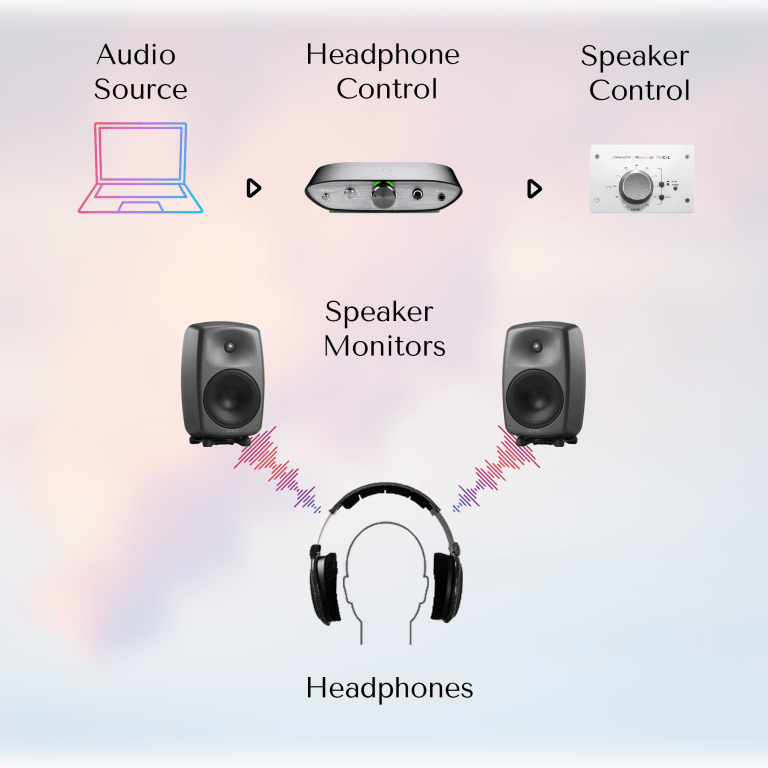
Image |
Component |
Position |
Feature |
Link to buy | ||
|---|---|---|---|---|---|---|
|
|
| Output connection from laptop or tablet | |||
| Headphone Control | Connected via Interconnect 1 from audio source | Play HQ audio through speakers and headphones simultaneously
| |||
| Interconnect 2 | Headphone Control to Speaker Control
| Interconnect | |||
| Speaker Control | Connected via Interconnect 2 from Headphone Control | Independently control speaker volume with detail
| |||
| Interconnect 3 | Speaker Control to Speaker Monitors
| Interconnect | |||
| Speaker Monitors
| Connected via Interconnect 3 from speaker control | High fidelity stereo audio for the client & room | Genelec 8 Series Comparison / US / UK | ||
| Interconnect 4 | Headphone Control to Headphones | Interconnect
| Included with headphones
| ||
| Headphones
| Connected via headphone cable to Headphone Control
| High comfort + open soundstage |
Configuration summary
- Intention: high quality, comfortable & immersive music provision for interchangeable headphone and non-headphone listening positions
- Features: independent volume control for both headphones and speakers (client-side volume control can be added optionally)
- Unique components including additional cables: 7
- Component total cost with smallest Genelec speakers chosen: $1230 / £958 (total price may vary depending on vendor used)
If using an tablet in your practice, please consider the diagram below and additional components needed:

Image |
Component |
Position |
Feature |
Link to buy | ||
|---|---|---|---|---|---|---|
|
|
| Allows for USB connection between iPad and Headphone Control | |||
| Adapter (for older iPads) | Audio Source to Cable 1 | Allows for USB connection between iPad and Headphone Control | |||
| Additional power source for Headphone control (required for mobile devices) | Wall socket to Headphone control | Allows headphone control to be used with mobile devices (external power source) |
The rest continues from Cable 1 in the list above. Additional cost: $140 / £109
Configuration 2: alternative, more affordable set-up for a therapy room with music playing from computer or tablet
The following example represents a 1:1 therapy room with a combined and flexible arrangement of both loudspeakers and headphones. The difference with this set-up is that speaker volume control can be adjusted on the speaker itself rather than with a separate control unit and therefore includes fewer components.
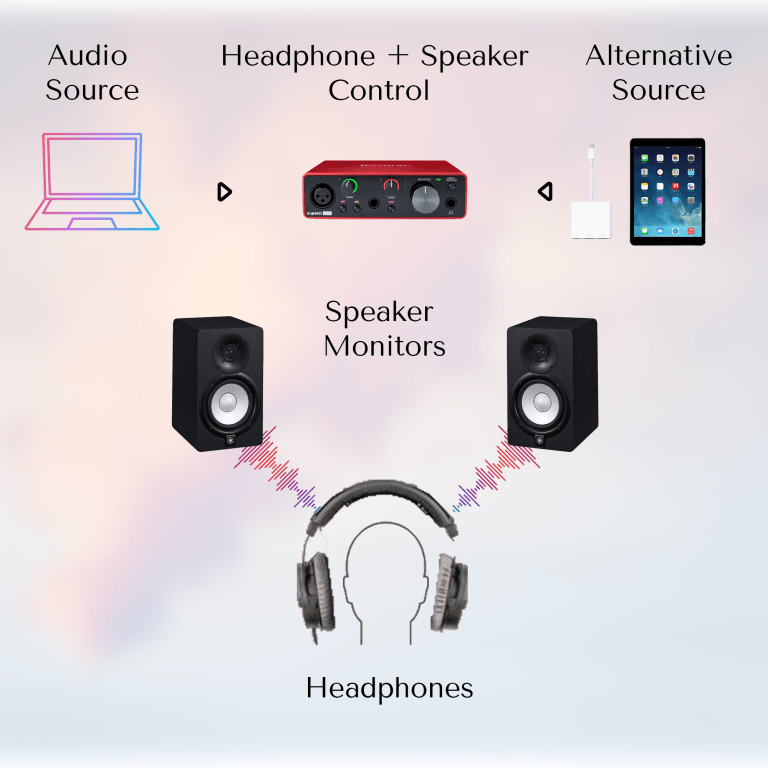
Image |
Component |
Position |
Feature |
Link to buy | ||
|---|---|---|---|---|---|---|
|
|
| Output connection from laptop or tablet | Included with headphone control Upgrade: longer USB cable for greater flexibility | ||
| Headphone + Speaker Control | Connected via Interconnect 1 from audio source | Play HQ audio through speakers and headphones simultaneously
| |||
| Interconnect 2 | Headphone + Speaker Control to Speaker Monitors | Interconnect | |||
| Speaker Monitors | Connected via Interconnect 2 from Headphone + Speaker Control | High fidelity stereo audio for the client & room | |||
| Headphones | Connected via headphone cable to headphone control | comfort + open-back design and wide soundstage. Good for naturally quiet spaces |
Configuration summary
- Intention: high quality, comfortable & immersive music provision for interchangeable headphone and non-headphone listening positions
- Features: simpler, more affordable set-up
- Unique components including additional cables: 4
- Component total cost: $625 / £487
- Intention: high quality, comfortable & immersive music provision for interchangeable headphone and non-headphone listening positions
Configuration 3: Group experience room with music playing from a computer or tablet
While we have less hands-on experience with supporting permanent installations for group use, there are some general recommendations that can be made when considering either a multi-headphone set-up or a loudspeaker designed for large spaces. Some options are provided below for your consideration:
Loudspeakers: Depending on the size of your space and budget, this may require specialised consultation and assessment.
- Component: Bose L1 Line-array (stereo pair recommended) US / UK
Multi-headphone set-up: A headphone splitter can be considered if sharing music between 2 people
from a device with a high output level (headphone amp rather than mobile device port). More than this can lower the overall output power for all listeners as headphone output voltage is usually only designed for a single listener.
Multi-headphone set-up 3 + people: A multi-channel headphone amp can be considered for 3+ listeners.
What are the best headphones for psychedelic therapy?
Regarding headphone choice, we wanted to provide some more detail on headphone design to further inform your decision, that may be based on individual needs or contextual factors such as noise pollution.
When considering a pair of headphones for your practice, there are three unique design approaches that offer different qualities for a listener:
Open-back: these headphones have ear cups with perforated outer shells that let air inside and sound escape freely.
- Features: good for comfort, airflow, wide soundstage and sense of openness
- Potential downfalls: not very sound isolating and bass response can be less full
- Therapeutic considerations: allows for more easy communication while headphones are on, generally has a more ‘natural’ sound that is good for rich acoustic and ambient music. More airflow and lighter earcup designs support comfortable listening over long periods.
- Example:
- Features: good for comfort, airflow, wide soundstage and sense of openness
Closed-back: these headphones have ear cups with solid outer shells that isolate the sound.
- Features: tighter sound/ bass reproduction although perhaps less ‘natural’ than open-back as well as sound isolation
- Potential downfalls: sweat and discomfort, more ear fatigue and echo from reverberated standing-waves
- Therapeutic considerations: good for a more intimate listening experience, perhaps for therapy rooms with some minor ambient noise from a nearby street or corridor
- Example:
- Features: tighter sound/ bass reproduction although perhaps less ‘natural’ than open-back as well as sound isolation
Noise-cancelling: these are closed-back headphones which feature active (programmatic) noise cancellation to reduce ambient noise in the background.
- Features: better sound isolation
- Potential downfalls: dependence on battery charging, potential for audio glitches and hum from noise-cancellation hardware (generally not recommended)
- Therapeutic considerations: Noise-cancelling headphones might be considered in therapy rooms with more noticeable noise pollution like medical equipment or noise from outside. Please note it will be more difficult to communicate with a patient with headphones on. Therefore, other physical cues may need to be used.
- Example:
- Features: better sound isolation
What about bluetooth? As a rule of thumb, we do not recommend bluetooth for permanent listening spaces because of (1) a dependence on battery-charging (2) a compressed, lower-quality audio signal and (3) the possibility for audio glitches that can arise from the use of wireless technology. Wired solutions provide a higher quality and more reliable audio signal.
The configurations above feature open-back headphones for the features stated, namely; comfort, airflow, easier communication with a practitioner with headphones-on and superior acoustic qualities. However, these headphones are best-suited for naturally quiet spaces, and demand that ambient noise within the room is kept to a minimum during sessions. Please consider open-back or noise-cancelling alternatives, based on your specific needs.
Conclusion
We have aimed to express and emphasise the importance of a well-selected and arranged audio set-up, and its potential influence on the comfort and experience of the listener. Feeling closer to, and more immersed in music is the intention of many speaker and headphone manufacturers. However, under psychedelics one can become more sensitive to certain aspects of equipment/ speaker design, like sonic distortion and the tightness & breathability of headphones.
Therefore, it is important that certain design qualities are prioritised in order to support a sense of immersion, and ultimately, an authentic and undistracted engagement with the music content chosen. As mentioned, one’s sense of immersion and comfortability also comes down to liking the music being played, the importance of which inspired the creation of Wavepaths and is explored in more detail here.
There is no one-size-fits all approach and sound equipment can be a matter of personal taste more than anything else (while taking into consideration basic requirements of comfort and sound quality). With this said, please take the configurations outlined in this guide and the equipment recommended as a catalyst for your own research, as our suggestions may or may not be relevant to your needs or budget.
We wish you all the best as you establish your listening space; a sanctuary of safety and comfort for inner exploration with music 🎧
Community recommendations
Some of our insights have come from working with therapists directly, and we acknowledge that there are many options to choose from for your practice.
If you would like to share information about your own audio set-up to be featured in this or a follow-up article, please let us know what has worked well for you and your clients in the form below:
References
- Set and Setting: Why Context Matters in Psychedelic Therapy | Wavepaths
- Carhart-Harris, Robin L., et al. “Psychedelics and the essential importance of context.” Journal of psychopharmacology 32.7 (2018): 725-731.
- Hartogsohn, Ido. “Modalities of the psychedelic experience: Microclimates of set and setting in hallucinogen research and culture.” Transcultural psychiatry 59.5 (2022): 579-591.
- Your Brain On Music: Can You Really Trip on Just Music Alone? | Wavepaths
- Kaelen, Mendel, et al. “The hidden therapist: evidence for a central role of music in psychedelic therapy.” Psychopharmacology 235 (2018): 505-519.
- Music for Psychedelic Therapy: Can I use Playlists?
